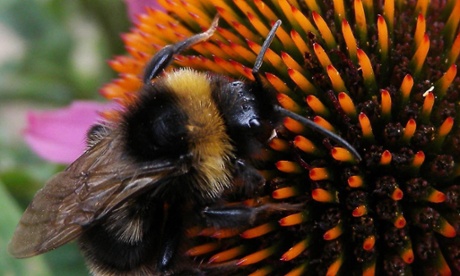1. How Roundup weedkiller can promote cancer, new study reveals
Sayer Ji
GreenMedInfo, 11 Nov 2013
http://www.greenmedinfo.com/blog/how-roundup-weedkiller-can-promote-cancer-new-study-reveals-1?page=1
[Links to sources and graphics included at weblink above]
Roundup herbicide (glyphosate) is in our air, rain, groundwater, soil and most food in the U.S., and an increasing body of research reveals it has cancer-promoting properties.
Researchers from the Indian Institute of Toxicology Research have recently confirmed the carcinogenic potential of Roundup herbicide using human skin cells (HaCaT) exposed to extremely low concentrations of the world’s best selling herbicide.
The researchers previously reported on glyphosate’s tumor promoting potential in a two-stage mouse skin carcinogenesis model[i] through its disruption of proteins that regulate calcium (Ca2+- ) signaling and oxidative stress (SOD 1), but were unable in these investigations to identify the exact molecular mechanisms behind how glyphosate contributes to tumor promotion.
The new study, published in the peer-reviewed journal ISRN Dermatology,[ii] sought out to clarify the exact mode of tumorigenic action, finding the likely mechanism behind glyphosate’s cancer promoting properties is through the downregulation of mitochondrial apoptotic (self-destructive) signaling pathways, as well as through the disruption of a wide range of cell signaling and regulatory components. Cell proliferative effects were induced by concentrations lower than .1 mM, and as low as 0.01 mM, which is four orders of magnitude lower than concentrations commonly used in GM agricultural applications (e.g. 50 mM). The fact that lower concentrations were more effective at inducing proliferation than higher concentrations (which suppressed cell growth), indicates that Roundup is a potent endocrine disrupter, and further highlights why conventional toxicological risk assessments are inadequate because they do not account for the fact that as concentrations are reduced certain types of toxicity — e.g. endocrine disruption — actually increase.
The researchers used the product Roundup Original (glyphosate 41%, polyethoxethyleneamine (POEA) ≅15%—Monsanto Company, St. Louis, MO, USA), and observed the following changes to human skin cells induced through exposure to this chemical mixture:
*Significant increases in cell proliferation (via disruption of CA2+ levels, i.e. decreased levels)
Increases oxidative stress, as measured by levels of ROS (reactive oxygen species)
*Cell-cycle dysregulation, marked by an accumulation of cells in S-phase (hallmark feature of cancer)
*Increased proliferating cell nuclear antigen (PCNA), a marker for increased cell proliferation
*Increased Bromodeoxyuridin (BrdU), a marker for increased cell proliferation
*Decreases in the level of the protein IP3R1, an indication of resistance to cell death
*Increases in Bcl-2 protein, a tumor promoter gene product
*Decreases in Bax proteins, a tumor suppressor gene product
*Caspase suppression (associated with prevention of cell death)
*Changes in the expression of the Ca2+- binding family of proteins (S100 family) S100A6/S100A9, associated with various cancers.
It is important to emphasize that while the researchers observed cell proliferation-associated changes in the expression of the Ca2+- binding proteins S100A6/A9 following glyphosate exposure to human skin cells, the implications of these findings reach beyond the skin cell lineage. They explained that related modifications of the expression pattern of S100A6/A9 protein have also been found in “hepatocellular carcinoma [15], lung cancer [16], colorectal cancer [17], and melanoma [18].”
The study included a diagram (shown below) representing graphically the multiple ways in which glyphosate disrupts cellular structure/function to contribute to uncontrolled cell proliferation.
The researchers summarized their findings as follows:
“In conclusion, in this study, we demonstrated that glyphosate may possibly exert proliferative effect in HaCaT cells by activating Ca2+ binding proteins to promote the imbalance of intracellular Ca2+ homeostasis and lessen SOD1 to increase ROS generation. This effect was partially reversed by treatment with antioxidant NAC indicating connections between oxidative stress and hypocalcaemia. Reduced Ca2+ levels enhance Bcl-2 and decrease Bax, subsequently leading to decrease in cytochrome c to stimulate further decrease of caspase 3 via the downregulation of IP3R1 level, thus halting apoptosis. The present study for the first time provides insight into the mechanism of glyphosate-induced neoplastic potential in mammalian skin system.”
It should be noted that their observation that the carcinogenicity of Roundup may be suppressed by the antioxidant n-acetyl-cysteine (NAC), which is a precursor to the cellular detoxifier and antioxidant known as glutathione and a readily available dietary supplement, has important implications, owing to how widespread exposure to Roundup herbicide has become, both through environmental exposures in air, soil, rain and groundwater, as well as in the tens of thousands of unlabeled products containing GM ingredients contaminated with physiologically significant levels of this chemical.
—
—
2. Emptying of Intracellular Calcium Pool and Oxidative Stress Imbalance Are Associated with the Glyphosate-Induced Proliferation in Human Skin Keratinocytes HaCaT Cells
Jasmine George and Yogeshwer Shukla
ISRN Dermatology
Volume 2013 (2013), Article ID 825180, 12 pages
Full text available free at:
http://www.hindawi.com/isrn/dermatology/2013/825180/
Proteomics Laboratory, Indian Institute of Toxicology Research (CSIR), Mahatma Gandhi Marg, Lucknow, Uttar Pradesh 226001, India
Abstract
We demonstrated that glyphosate possesses tumor promoting potential in mouse skin carcinogenesis and SOD 1, calcyclin (S100A6), and calgranulin B (S100A9) have been associated with this potential, although the mechanism is unclear. We aimed to clarify whether imbalance in between levels and oxidative stress is associated with glyphosate-induced proliferation in human keratinocytes HaCaT cells. The levels, ROS generation, and expressions of G1/S cyclins, IP3R1, S100A6, S100A9, and SOD 1, and apoptosis-related proteins were investigated upon glyphosate exposure in HaCaT cells. Glyphosate (0.1 mM) significantly induced proliferation, decreases , and increases ROS generation in HaCaT cells, whereas antioxidant N-acetyl-L-cysteine (NAC) pretreatment reverts these effects which directly indicated that glyphosate induced cell proliferation by lowering levels via ROS generation. Glyphosate also enhanced the expression of G1/S cyclins associated with a sharp decrease in G0/G1 and a corresponding increase in S-phases. Additionally, glyphosate also triggers S100A6/S100A9 expression and decreases IP3R1 and SOD 1 expressions in HaCaT cells. Notably, Ca2+ suppression also prevented apoptotic related events including Bax/Bcl-2 ratio and caspases activation. This study highlights that glyphosate promotes proliferation in HaCaT cells probably by disrupting the balance in between levels and oxidative stress which in turn facilitated the downregulation of mitochondrial apoptotic signaling pathways.

